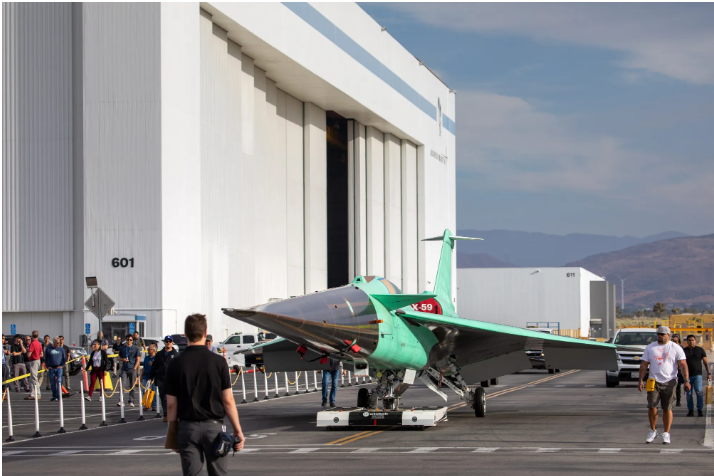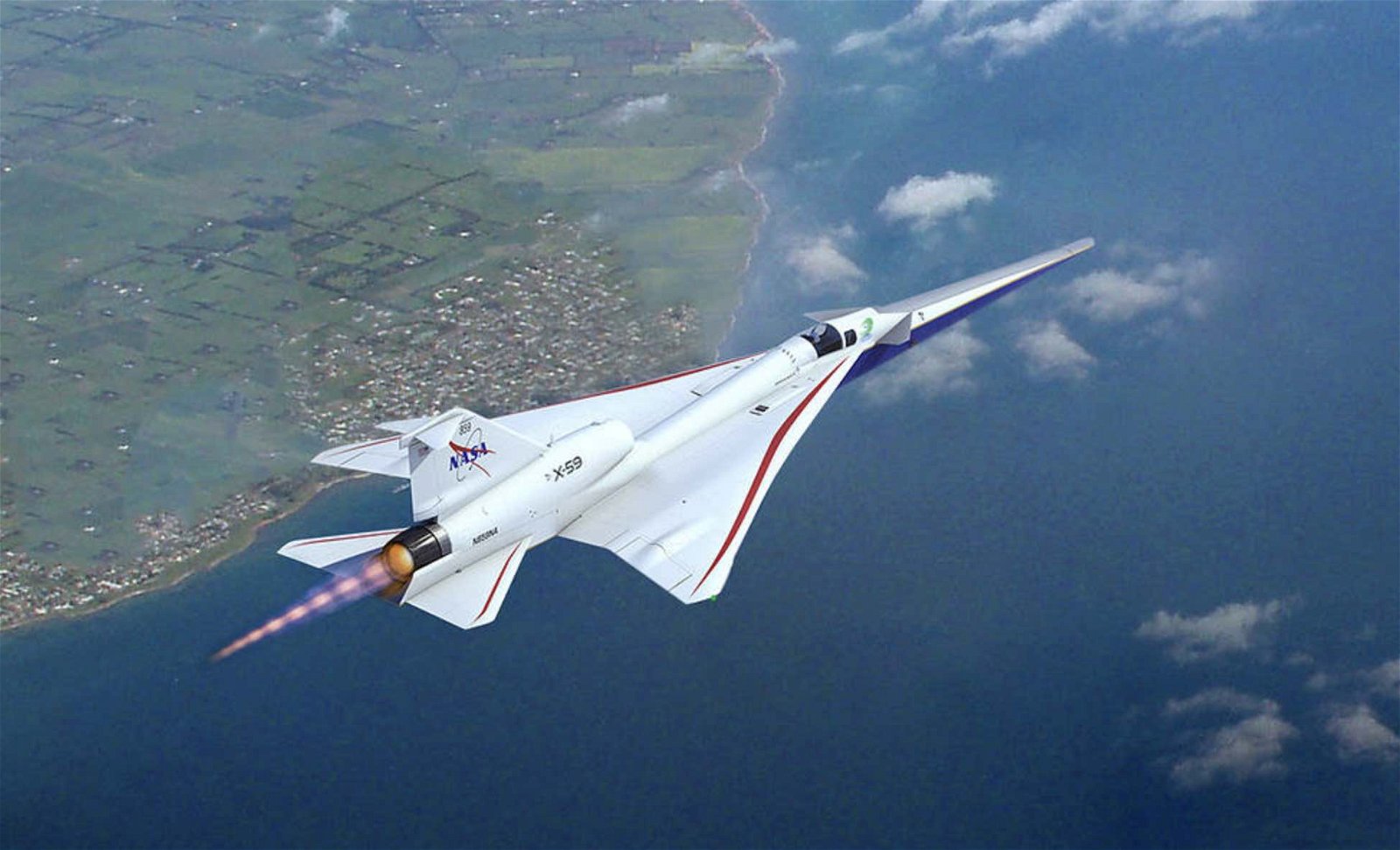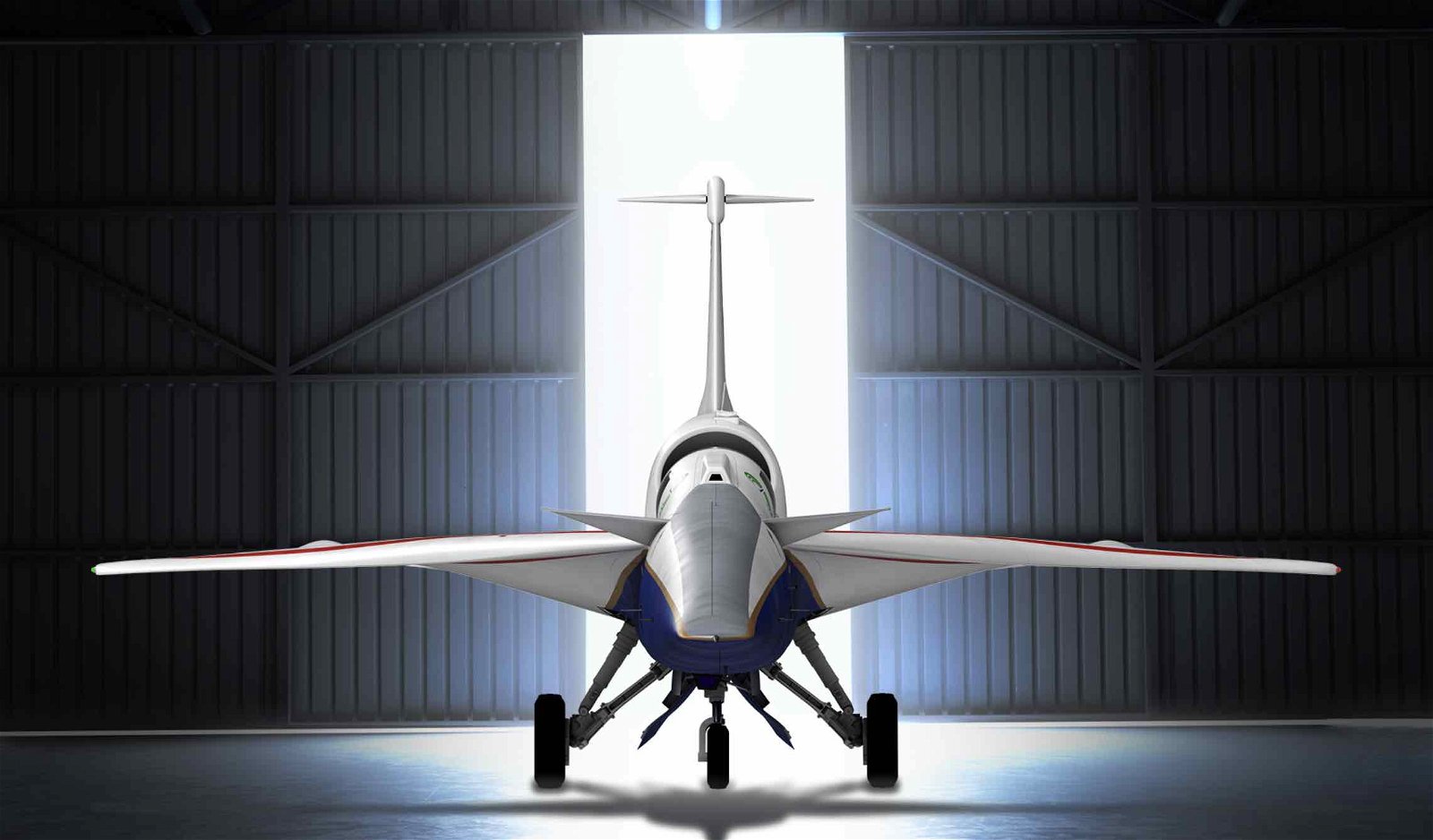NASA has announced plans to unveil its X-59 quiet supersonic aircraft next week, the American space agency said in a statement on Friday.
“NASA will provide live coverage as it reveals its X-59 aircraft at 4 p.m. EST on Friday, Jan. 12, as part of the agency’s Quesst mission to make commercial supersonic flight possible,” read a portion of the NASA statement.
The aircraft, which recently received a patriotic paint job, will see its public reveal during a ceremony at the famous Lockheed Martin Skunk Works facility in Palmdale, California.
As part of NASA’s Quesst mission, the X-59 will be flown above populated regions of the United States, after which the space agency will collect information from the public about responses to sound the aircraft produces, which will then be supplied to international regulators for assessment.


Presently, the Federal Aviation Administration (FAA) prohibits supersonic flight by any commercial aircraft over land. The regulations largely resulted from flights of the Supersonic Transport Concorde aircraft decades ago, which was ultimately retired partly due to problems related to environmental restrictions on the production of sonic booms.
However, even earlier regulations like the 1968 Aircraft Noise Abatement Act instructed the FAA, in coordination with the DOT, to establish and update standards for measuring aircraft noise and sonic booms. In 1970, the FAA suggested a rule to limit the speed of civil aircraft to below Mach 1 unless specifically permitted by the FAA.
Today, FAA regulations prevent the operation of civilian aircraft at speeds exceeding Mach 1 over the United States and within a specified offshore area where the sonic boom might reach U.S. territory. On occasion, the FAA will grant certain exceptions, and any new aircraft like the X-59 will be required to comply with the FAA’s existing standards for noise certification.
NASA has said that the X-59 will be “the first step to changing existing regulations by demonstrating that an airplane can be designed to produce a quieter sonic ‘thump’ instead of a disruptive sonic boom.”


The X-59 will likely not be the only aircraft that will push for updates to existing FAA regulations about supersonic travel. In 2022, American Airlines placed a series of non-refundable deposits on 20 Overture aircraft from Boom Supersonic, which plans to produce aircraft that can carry as many as 80 passengers at speeds up to Mach 1.7. However, like the Concorde and Tupolev Tu-144, Overture is limited to travel over water.
NASA says next week’s unveiling of the X-59 will be streamed live for viewers on the space agency’s NASA+ streaming service, as well as its related web and television services, social media, and the official NASA app. Additional information about the X-59 can be found on NASA’s Quesst program webpage.
Micah Hanks is the Editor-in-Chief and Co-Founder of The Debrief. He can be reached by email at micah@thedebrief.org. Follow his work at micahhanks.com and on X: @MicahHanks.

